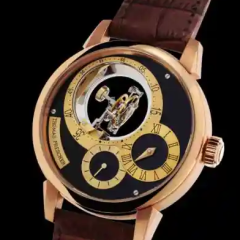microscopic camera options
-
Similar Content
-
Recently Browsing
- No registered users viewing this page.
-
Topics
-
Posts
-
By spectre6000 · Posted
£4.04 originally worked out to $5, or thereabouts accounting for currency fluctuations. Inflation calculator from 2020 (when the thread was started, though not when Andy coined the term) says we're looking at $6 currently. What currency is the 6.99 inflation adjusted figure cited in the poll? $6 may still seem restrictive, but don't forget that's part of the point. It's a challenge. Thrill of the hunt and all. Diamonds in the rough. Also, and my personal angle on the game, a fun and inexpensive way to learn watchmaking skills. -
Dear all My first experience servicing a quartz watch after servicing as an hobby my mechanic watches for many years. This is an old Certina that was given to me by a friend, with a ETA/ESA 9362 movement. Before service I put a new battery and the watch was working. After servicing the movement stopped working. i understand that there might be a lot of reasons for this (including the fact that I used technics and oils from mechanic movements on this one ), but at this stage I would only need to check if the electronic module is good. Don't have a quartz tester but only a multimeter. You will see on the photos that the battery contact is broken and needs soldering. With the battery in the movement I can confirm that the electronic module had power (1.57v). Question: what basic tests can I do with a multimeter to confirm that the electronic module is good? how to check if the coil is good and if there is pulse in the electronic module? what contacts should I use to test it? (I saw some videos on you tube but was not able to find the specific test procedures for the ETA 9362). Any information to help me check if the reason for the movement to stop is on the electronic or mechanic part of the watch is much appreciated. Many thanks
-
Dear all My first experience servicing a quartz watch after servicing as an hobby my mechanic watches for many years. This is an old Certina that was given to me by a friend, with a ETA/ESA 9362 movement. Before service I put a new battery and the watch was working. After servicing the movement stopped working. i understand that there might be a lot of reasons for this (including the fact that I used technics and oils from mechanic movements on this one 😞 ), but at this stage I would only need to check if the electronic module is good. Don't have a quartz tester but only a multimeter. You will see on the photos that the battery contact is broken and needs soldering. With the battery in the movement I can confirm that the electronic module had power (1.57v). Question: what basic tests can I do with a multimeter to confirm that the electronic module is good? how to check if the coil is good and if there is pulse in the electronic module? what contacts should I use to test it? (I saw some videos on you tube but was not able to find the specific test procedures for the ETA 9362). Any information to help me check if the reason for the movement to stop is on the electronic or mechanic part of the watch is much appreciated. Many thanks
-
By Neverenoughwatches · Posted
I have bought without seeing inside before and have generally been luck Michael. If its a screwback case i seem to allow some leniency on the removal of it, i dont know why because I've never struggled to remove a back with very basic equipment. If everything is inside them, then once restored and keeping time the oris could be worth 20 -30 each, I've paid a lot more Oris date pointers in the past. -
By Neverenoughwatches · Posted
I use a nylon bristle from a brush to run around the coils or a thin piece of copper wire, you need .1 - .15mm.
-






Recommended Posts
Join the conversation
You can post now and register later. If you have an account, sign in now to post with your account.
Note: Your post will require moderator approval before it will be visible.